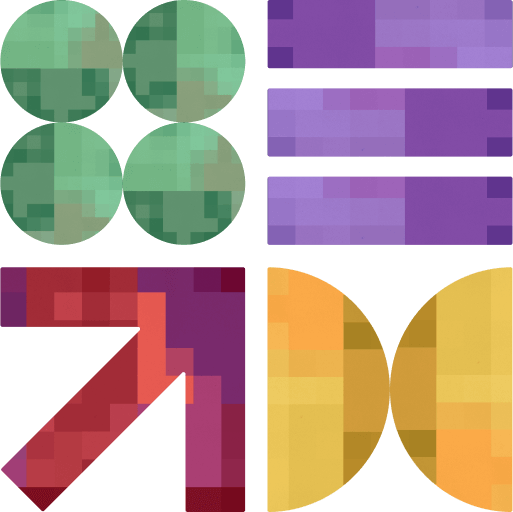5 FAQs on Cross Platform Mobile App Development Services

Cross platform mobile app development services can cut development costs and accelerate time-to-market by more than 30%.
With React Native now powering nearly 6.75% of new apps in the App Store and Flutter commanding 11.07% on Google Play, ignoring this trend means falling behind. And staying native-only could cost you time, money, and relevance.
If you’re still a little unclear about hybrid apps development, here are five FAQs to help you build smarter and faster.
1) What is Cross Platform Mobile App Development?
Cross platform mobile app development is the process of creating software applications that run on multiple operating systems.
It’s typically used for developing both iOS and Android, using a single codebase. This allows developers to write code once and deploy apps to multiple platforms with reduced duplication and shorter development timelines.
This approach offers several advantages, including:
- Faster Time to Market – One codebase means shorter development cycles.
- Lower Development Cost – Reduced resources and effort lead to cost savings.
- Code Reusability – Developers can reuse up to 80–90% of code across platforms.
- Consistent User Experience – Shared logic ensures uniformity in features and performance.
However, it also has limitations such as restricted access to certain native APIs or hardware functions. You need to factor these into your development plan as they may impact performance for high-end applications like 3D games or VR apps.
Luckily, choosing cross platform mobile app development services that specialize in mitigating these limitations can help improve performance outcomes.
💡 Pro Tip! Not every mobile product needs a native app. Progressive web apps (PWAs) offer offline support, speed, and installability. Learn how PWA development services can transform mobile experiences.
2) How to Build Cross-Platform Mobile Apps?
Building cross-platform mobile apps requires a strategic blend of technology selection, architecture planning, and rigorous testing. To give you an idea of what to expect, here’s a high-level overview of the process:
- Define Requirements and Features – Start by identifying your app’s core features, user flow, and business goals. Define the platforms you intend to support.
- Choose a Cross-Platform Framework – Select a framework that aligns with your app’s complexity, team expertise, and performance needs.
- Design UI/UX with Platform Guidelines – Use tools like Figma or Adobe XD to create platform-agnostic designs. However, be open to following platform-specific UI conventions where needed.
- Set Up a Shared Codebase – Develop the logic, APIs, and integrations in a shared codebase using the selected framework.
- Access Native Modules if Needed – Use native modules or plugins for accessing features like GPS, camera, or push notifications.
- Test on Multiple Devices – Use simulators, emulators, and real devices to ensure app performance, UI consistency, and responsiveness across screen sizes.
- Deploy and Maintain: Build platform-specific packages (e.g .apk for Android) and publish them to their respective app stores. Continuous monitoring, updates, and patches are crucial post-launch.
An experienced team offering cross platform mobile app development services will typically handle this entire lifecycle using agile sprints and CI/CD pipelines to streamline deployment. So, they’ll have the heavy work covered for you.
3) How Much Does It Cost to Build a Cross-Platform App?
The cost of developing a cross-platform app varies widely based on several factors:
- App Complexity – Apps with more screens, third-party integrations, or custom features tend to cost more.
- Design – Custom-designed UI/UX increases cost compared to standard components.
- Framework Used -Some frameworks require more effort or custom plugin development.
- Development Location – Developer hourly rates vary by region. Tampa, for instance, has a lower cost of living than most tech hubs. Therefore, you can hire developers for relatively lower rates.
- Maintenance and Updates – Ongoing improvements and bug fixes add to the total cost over time.
If you seek a more concrete figure, here’s a rough estimate of cost ranges:
- A basic app may cost between $27,000 – $50,000
- A moderately complex app may range from $50,000 – $160,000.
- An enterprise-grade or highly customized app can cost between $80,000 – $300,000+
Engaging the right app development partner allows your business to receive a detailed project scope, timeline, and cost breakdown. Therefore, you can ensure budget alignment.
4) Which Framework is Best for Cross-Platform Mobile App Development?
Cross platform mobile app development services give you multiple framework options, each suited to different app goals, features, and performance requirements.
Flutter uses the Dart programming language and is known for excellent performance and customizable UI. It’s ideal for apps that require smooth animations or custom-designed interfaces.
React Native is based on JavaScript and backed by Meta, with a large ecosystem to support it. It’s a solid choice for apps with moderate complexity and tight deadlines. After all, it can reuse code across web and mobile.
Developed by Microsoft, Xamarin uses C# and integrates well within the .NET ecosystem. It’s a good choice for enterprise apps, especially if your organization already uses Microsoft technologies.
Finally, Ionic relies on web technologies like HTML, CSS, and JavaScript. It’s a reliable choice for quickly building MVPs or content-driven apps, especially when speed matters. However, its performance may fall short compared to Flutter or React Native.
When choosing the right partner, confirm their proficiency in your selected framework and whether they can optimize performance, scalability, and third-party integrations.
💡 Pro Tip! The right mobile app development tools save time and tech debt. Evaluate community support, update frequency, and cross-platform capabilities before diving in.
5) How Can I Select the Right Cross Platform Mobile App Development Services?
Picking the right development partner can make or break your cross-platform app. Here are a few things you’ll want to look out for:
- Technical Expertise – Ensure the team has proven experience in your chosen framework and can show a portfolio of similar apps.
- End-to-End Services – Look for a partner that provides comprehensive services, from planning and design to development and ongoing support.
- Adherence to Agile – Agile development ensures flexibility, quick iterations, and ongoing collaboration during the project.
- Clear Communication – Transparency in progress updates, timelines, and expectations prevents delays and misalignment.
- Scalability and Support – The right partner should be able to grow with your needs, offering scalability and long-term maintenance if your app expands.
Industry-trusted hybrid mobile app development services often offer road mapping workshops, user testing, and post-launch analytics integration. That way, they can ensure your product evolves with user demands.
💡 Pro Tip! Most business app challenges stem from fragmented development. See how cross-platform mobile app development services can simplify and speed up your entire build.
Have a Cross-Platform App in Mind?
Choosing the right cross-platform app development company isn’t just about code; it’s about building something that works for your business.
At DPL, we turn your app ideas into scalable, user-friendly products that feel native on every device. And as an Agile development company, we move fast, adapt quickly, and keep you in the loop, so you’re never left guessing.
Whether you’re testing an MVP or launching something big, our team is here to guide, build, and support you every step of the way.
Ready to bring your idea to life? Fill out the form below. We’d love to hear what you’re building.





